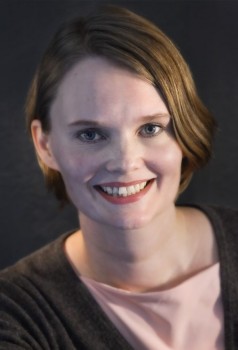Search results for "sofi oksanen"
What was Finland reading this summer?
2 September 2010 | In the news
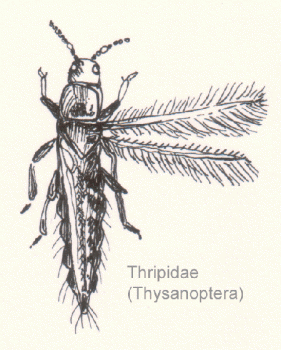 Novels, thrillers and comics were on the June–July list of best-selling books according to the Booksellers’ Association of Finland.
Novels, thrillers and comics were on the June–July list of best-selling books according to the Booksellers’ Association of Finland.
And, as the popular poet, MP, novelist and television celebrity Tommy Tabermann (born 1947) died in June, his collected poems, Runot 1970–2010 became number one of the list.
Sofi Oksanen’s highly popular novel Puhdistus (Purge) has kept itself on the list for a long time, was now at number three. Tuomas Kyrö’s humorous novel about a man in his 80s, Mielensäpahoittaja (‘Taking offense’) was at number seven, Pertti Jarla’s Fingerpori 3 at number eight and Leena Lander’s new novel Liekin lapset (‘Children of the flames’) at number ten.
The top ten list of translated fiction included works by Jo Nesbø, Charlaine Harris, John Irving, Donna Leon and Dagsson Hugleikur.
During the summer there’s clearly enough time for nature observations: The Cloudspotter’s Guide by Gavin Pretor-Pinney, a work presenting birds’ sounds and a book on bugs and creepy crawlies were among the ten best-selling non-fiction books.
Our favourite things
29 January 2010 | Letter from the Editors
Every reader has his or her favourite book. It is possible to define, with acceptable criteria, when a work of fiction is ‘a good novel’: do the plot, characterisation and language work, does it have anything to say? But when is a ‘good’ novel better than another ‘good’ novel? More…
Postcards from the lakeside
8 August 2010 | This 'n' that
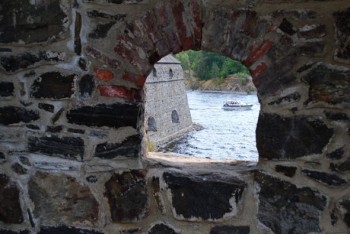
A tower with a view: Olavinlinna (St Olaf's castle). Photo: Lola Rogers
Translator Lola Rogers (of, for example, Sofi Oksanen’s best-selling novel Purge), from Seattle, spent a few weeks in Finland, and went on a cruise on Lake Saimaa.
Olavinlinna (St Olaf’s castle), and the opera, in the city of Savonlinna, was one of her stops; take a look at her blog – you’ll perhaps recognise the the inventive 16th-century wall privies on the towers we wrote about a while ago.
There are quite a few photos from Helsinki, too – from this hot, hot (too hot?) summer.
Two men in a boat
The meaning of life, Bob Dylan, the broken thermostat of the Earth, the authors Ambrose Bierce and Aleksis Kivi…. Two severely culturally-inclined men set out to row a boat some 700 kilometres along the Finnish coastline, and there is no shortage of things to discuss. Extracts from the novel Nyljetyt ajatukset (‘Fleeced thoughts’, Teos, 2014)
The red sphere of the sun plopped into the sea.
At 23.09 official summertime Köpi announced the reading from his wind-up pocket-watch.
‘There she goes,’ commented Aimo, gazing at the sunken red of the horizon, ‘but don’t you think it’ll pop back up again in another quarter of an hour, unless something absolutely amazing and new happens in the universe and the solar system tonight!’
Aimo pulled long, accelerating sweeps with his oars, slurped the phlegm in his throat, spat a gob overboard, smacked his lips and adjusted his tongue on its marks behind his teeth. There’s a respectable amount of talk about to come out of there, thought Köpi about his old friend’s gestures, and he was right.
‘Sure thing,’ was Aimo’s opening move, ‘darkness. Darkness, that’s the thing. I want to talk about it and on its behalf just now, now in particular, while we’re rowing on the shimmering sea at the lightest point of the summer. More…
New from the archives
13 February 2015 | This 'n' that
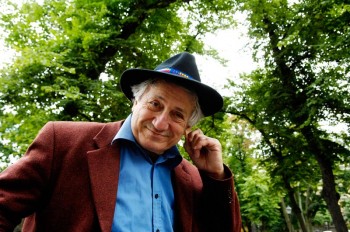
Daniel Katz. Photo: Veikko Somerpuro/WSOY.
In the midst of today’s richly cosmopolitan literary scene – we’re thinking of blockbusters like Sofi Oksanen’s Puhdistus (Purge, 2008), or Patjim Statovci’s Kissani Jugoslavia (‘My cat Yugoslavia’, 2014) (linkit) – it’s hard to imagine the colour and excitement represented by the work of Daniel Katz (born 1938) from the publication of his first book, Kun isoisä Suomeen hiihti (‘When grandfather skied to Finland’, 1969) onward. Characterised by dark humour, gentle irony, a wild imagination and a profound world view, Katz’s writing is informed but never defined by his outsider status as a Jew writing in Finnish.
Today’s story, taken from Katz’s book Talo Sleesiassa (‘A house in Silesia’) describes the journey taken by Erwin, a German Jew, to visit the home he lived in before the Second World War. Katz has a fine grasp of the ironies of history:
‘We arrived at the city of his birth, which currently is referred to as The City, for the sake of simplicity and tact: the town has – used to have, rather – two names, a German and a Polish, and one or the other party might take offence. My brother-in-law had in fact been born in a city whose name began with a B, though now it began with a W. Evolution of this kind is called phonetic history.’
The extract is accompanied by an interview of Daniel Katz by Daniel Katz.
*
The digitisation of Books from Finland continues apace, with a total of 356 articles and book extracts made available online so far. Each week, we bring a newly digitised text to your attention.
Helsinki Book Fair 2011
2 November 2011 | In the news

President Toomas Hendrik Ilves at the Book Fair: Viro is Estonia in Finnish. Photo: Kimmo Brandt/The Finnish Fair Corporation
The Helsinki Book Fair, held from 27 to 30 October, attracted more visitors than ever before: 81,000 people came to browse and buy books at the stands of nearly 300 exhibitors and to meet more than a thousand writers and performers at almost 700 events.
The Music Fair, the Wine, Food and Good Living event and the sales exhibition of contemporary art, ArtForum, held at the same time at Helsinki’s Exhibition and Convention Centre, expanded the selection of events and – a significant synergetic advantage, of course – shopping facilities. Twenty-eight per cent of the visitors thought this Book Fair was better than the previous one held in 2010.
According to a poll conducted among three hundred visitors, 21 per cent had read an electronic book while only 6 per cent had an e-book reader of their own. Twenty-five per cent did not believe that e-books will exceed the popularity of printed books, and only three per cent believed that e-books would win the competition.
Estonia was the theme country this time. President Toomas Hendrik Ilves of the Republic of Estonia noted in his speech at the opening ceremony: ‘As we know well from the fate of many of our kindred Finno-Ugric languages, not writing could truly mean a slow national demise. So publish or perish has special meaning here. Without a literary culture, we would simply not exist and we have known this for many generations, since the Finnish and Estonian national epics Kalevala and Kalevipoeg. – During the last decade, more original literature and translations have been published in Estonia than ever before. And we need only access the Internet to glimpse the volume of text that is not printed – it is even larger than the printed corpus. We live in an era of flood, not drought, and thus it is no wonder that as a discerning people, we do not want to keep our ideas and wisdom to ourselves but try to share and distribute them more widely. The idea is not to try to conquer the world but simply, with our own words, to be a full participant in global literary culture, and in the intellectual history and future of humankind.’
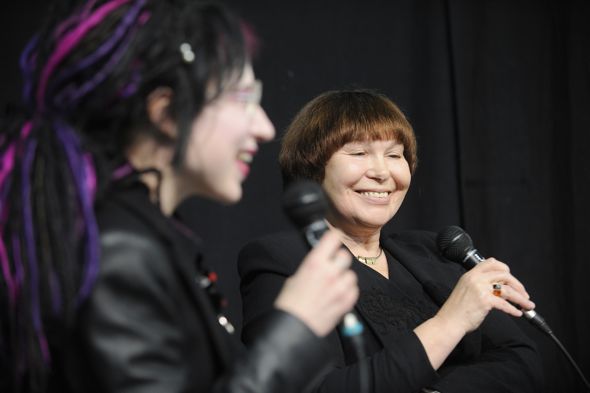
Finland meets Estonia: authors Sofi Oksanen and Viivi Luik in discussion. Photo: Kimmo Brandt/The Finnish Fair Corporation
Best-selling books in September
18 October 2012 | In the news
Number one on the September list of best-selling Finnish fiction titles, compiled by the Finnish Booksellers’ Association, is Sofi Oksanen’s new novel Kun kyyhkyset katosivat (‘When the doves disappeared’, Like): which shot straight to the top of the list on its publication in August.
The huge national and international success of her previous novel, Puhdistus – in English, Purge – published in 2008 and also set in Estonia, has paved the way for Kun kyyhkyset katosivat; translation rights have been sold to several countries already.
Number two on the list was Riikka Pulkkinen’s third novel, Vieras (‘The stranger’, Otava). In third and fourth places were two new thrillers, Paholaisen pennut (‘The devil’s cubs’, Tammi), by Leena Lehtolainen, and Ylösnousemus (‘Resurrection’, WSOY), by Ilkka Remes.
In fifth place was Sirpa Kähkönen’s novel Hietakehto (‘Sand cradle’, Otava): number six in her series set in the Kuopio region of eastern Finland, during the Second World War.
The non-fiction (translated foreign as well as Finnish) list was topped by Blaine Harden’s Escape from Camp 14 (in North Korea; Gummerus). The variety of subjects on this list can be surprising: number two is about angels (Lorna Byrne’s A Message of Hope from the Angels, Otava), number three a biography of a Finnish ex-con turned surgeon (Veitsen terällä, ‘On knife’s edge’, by Arno Kotro & Christer Lybäck, Otava), number four about the Cold War in Finland (Jukka Tarkka: Karhun kainalossa, ‘Under the arm of the bear’, Otava) and number five about cupcakes (by Angela Drake, Otava)…
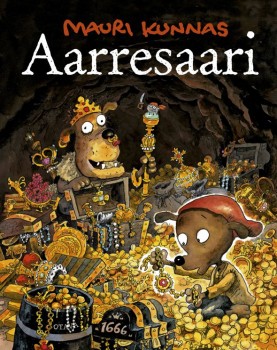
Mauri Kunnas: Aarresaari
The three best-selling children’s books were by seasoned Finnish authors: illustrator-writer Mauri Kunnas, with his tribute to R.L Stevenson, Aarresaari (‘Treasure island’, Otava), Aino Havukainen & Sami Toivonen, with Tatu ja Patu pihalla (‘Tatu and Patu outdoors’, Otava) and Sinikka Nopola & Tiina Nopola, with their Risto Räppääjä ja nukkavieru Nelli (‘Risto Rapper and Threadbare Nelly’, Tammi).
In other words
21 June 2012 | This 'n' that
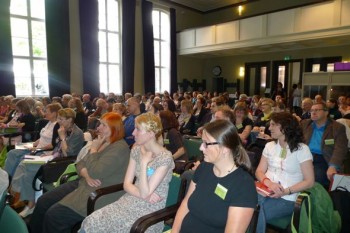
Wordworkers meet: the translators' congress in Helsinki, 11–14 June. Photo: Hannele Jyrkkä
From Finnish or Swedish into 32 languages: in mid June FILI (the Finnish Literature Exchange) held the biggest international meeting of translators of Finnish literature of all time.
The congress, entitled Kääntäjän sana/Översättarens ord (Translator’s word) was planned with one eye on the Finnish theme of the 2014 Frankfurt Book Fair.
The former Lisa Hagman School, now the House of Learning, offered the premises for workshops and lectures for 120 professional translators and almost 70 scholars of language and literature.
Participants translating from both Finnish and Finland-Swedish were offered opportunities to meet writers, listen to lectures from experts in language and literature and gain feedback from other active professional readers. More…
Best-selling books in September
15 October 2010 | In the news
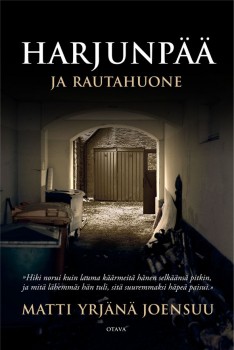 In September, Finns read crime novels. Matti Yrjänä Joensuu’s latest book featuring his police protagonist Timo Harjunpää, Harjunpää ja rautahuone (‘Harjunpää and the iron room’, Otava), topped the Booksellers’ Association of Finland’s best-seller list.
In September, Finns read crime novels. Matti Yrjänä Joensuu’s latest book featuring his police protagonist Timo Harjunpää, Harjunpää ja rautahuone (‘Harjunpää and the iron room’, Otava), topped the Booksellers’ Association of Finland’s best-seller list.
Joensuu’s Harjunpää ja pahan pappi was published in English in 2006 and reissued in 2008 under the title Priest of Evil. A film adaptation will be released in Finland in late October, directed by Olli Saarela and starring Peter Franzén in the title role.
Number two was the latest thriller from the pseudonymous Ilkka Remes, Shokkiaalto (‘Shock wave’, WSOY), and number three was Leena Lehtolainen’s Minne tytöt kadonneet (‘Where have all the young girls gone’, Tammi).
Sofi Oksanen’s record-breaking seller and critical success Puhdistus (WSOY; English edition: Purge, Atlantic Books) held strong in fourth place.
In translated fiction, Paul Auster, Diana Gabaldon ja Paulo Coelho headed the list.
The non-fiction list was topped by a study of sociability and social skills by Liisa Keltikangas-Järvinen (Sosiaalisuus ja sosiaaliset taidot, WSOY). Readers seem to be interested in survival, as the number two book was in a similar vein, Lilli Loiri-Seppä’s Selviämistarinoita (‘Stories of coping’ – also translatable as ‘Stories about getting sober’, Gummerus), about how to stop drinking.
Walt Disney was missing again from the top of the children’s list, the number one and number two spots being taken by Finnish picture books, Tatu ja Patu supersankareina (‘Tatu and Patu as superheroes’, Otava) by Aino Havukainen and Sami Toivonen, and Hurja-Harri ja pullon henki (‘Scary Harry and the genie in the bottle’, Otava) by the veteran graphic artist and children’s book author Mauri Kunnas. A new installment of the Ella storybook series by Timo Parvela, Ella ja Yön ritarit (‘Ella and the Knights of the Night’, Tammi) held the number three spot. In September, Finns read crime novels. Matti Yrjänä Joensuu’s latest book featuring his police protagonist Timo Harjunpää, Harjunpää ja rautahuone (‘Harjunpää and the iron room’, Otava), topped the Booksellers’ Association of Finland’s best-seller list.
From the land of abundant reindeer…
17 March 2011 | This 'n' that
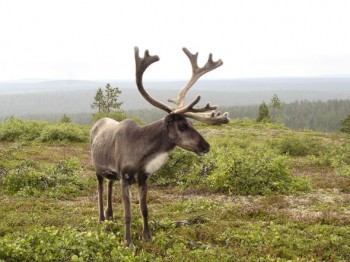
Rangifer tarandus, Finnish Lapland. Photo: Grand-duc (http://en.wikipedia.org/wiki/User:Grand-Duc)
Is Finland, a land of reindeer, ‘dense pine forests and deep snows’ also a ‘quiet literary landscape’?
Not exactly, as we at Books from Finland hope we are demonstrating. And over on the Bookslut website, Bonnie B. Lee comes to the same conclusion, after having mused about the reindeer (yes: in Helsinki you find tasty chunks of them in the freezer boxes of any foodstore) and reading three Finnish novels in English translation.
The novels Lee reviews are Purge by Sofi Oksanen (Puhdistus, 2008, translated by Lola Rogers, published last year), When I forgot by Elina Hirvonen (Että hän muistaisi saman, 2005, translated by Douglas Robinson, published in 2009) and The Year of the Hare by Arto Paasilinna (Jäniksen vuosi, 1975, first published in an English translation by Herbert Lomas in 1995, reprinted as a Penguin edition last year).
We have just entered the Year of the Rabbit, in recognition of which Paasilinna’s book (about a man who rejects his old life and goes roaming the wildernesses with a hare as his only companion) has appeared on the tables of large bookstores in the US. ‘The Year of the Hare is only the most Finnish, and perhaps most antically Zen-ish, of a shelf-load of books that tell us to find and live by our own ideas of contentment,’ said The Wall Street Journal.
The traumatic experiences of war and Finland’s deep forests are the common feature of these novels, Bonnie B. Lee finds. She also opines that ‘melancholy pervades the Finnish psyche’, and that ‘Finland vies with Hungary for highest suicide rate in Europe‘. Oh, but this latter is no longer true: number one on a World Health Organisation suicide rates list is Lithuania, followed by Hungary, Slovenia, Estonia and Latvia – Finland is number six.
Lee is clearly intrigued by her travels in contemporary Finnish literature. ‘The search for identity, a reckoning with a troubled past, and an outsider’s view looking in,’ she comments, ‘are all the stuff of great writing, and Finland is poised to continue to produce poignant and introspective literature that we can appreciate now that English translators have begun the work.’
Poignant and introspective or occasionally funny and fantastical, this is the work we try to offer an early glimpse of, in translation, at Books from Finland. Stay with us!
The books that sold in May
10 June 2011 | In the news
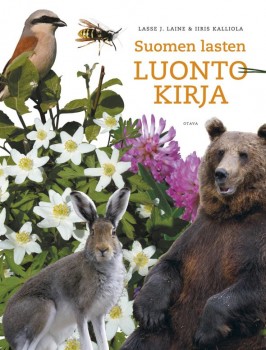 In May the Bookseller’s Association of Finland’s list of the best-selling Finnish fiction was still topped – as it was in March – by a collection of poems: Heli Laaksonen’s Peippo vei (‘The chaffinch took it’, Otava) is written in a local dialect spoken in south-western Finland. See our introduction to Laaksonen’s new poems.
In May the Bookseller’s Association of Finland’s list of the best-selling Finnish fiction was still topped – as it was in March – by a collection of poems: Heli Laaksonen’s Peippo vei (‘The chaffinch took it’, Otava) is written in a local dialect spoken in south-western Finland. See our introduction to Laaksonen’s new poems.
Pirjo Rissanen’s novel Äitienpäivä (‘Mother’s day’, Gummerus) was number two and Seppo Jokinen’s crime story, Ajomies (‘The driver’, Pulitzer/Crime Time) number three.
Tuomas Kyrö’s short prose about a grumpy old man resisting all sorts of contemporary fads, Mielensäpahoittaja (‘Taking offence’, WSOY), was number four.
Sofi Oksanen’s hugely successful novel about women and Estonian history, Puhdistus (WSOY, 2008) – English version: Purge –, still occupies number five on the list.
The most popular books for children and young people in May was the Finnish translation of a classic, Saint-Exupéry’s Le Petit Prince. A nature book for children, Suomen lasten luontokirja by Lasse J. Laine and Iiris Kalliola, was number two, and the cartoon kids Tatu and Patu occupied the third place (both published by Otava): Tatun ja Patun Suomi (‘Tatu and Patu’s Finland’), written and illustrated by Aino Havukainen and Sami Toivonen.
The translated fiction list was – as in March – topped by Maalattujen luolien maa (The Land of Painted Caves), by Jean M. Untinen-Auel, an American writer with Finnish roots. The novel is set in the late Paleolithic era.
On the non-fiction list there were books, in particular, on cooking, gardening, birds – and diets.
Literary prizes
15 November 2008 | In the news
In November six novels were shortlisted for the twenty-fifth Finlandia Prize for Fiction, to be awarded on 4 December.
Like it, or else
23 January 2014 | Non-fiction, Tales of a journalist

Illustration: Joonas Väänänen
Hitting the ‘like’ button is not only boring but also working its way from Facebook deeper into society, says Jyrki Lehtola. Surely there must be some other way of solving the world’s problems?
At the end of the autumn the theatre critic of the Helsingin Sanomat newspaper panned Sofi Oksanen’s stage adaptation of her novel Kun kyyhkyset katosivat (‘When the doves disappeared’, 2013).
That’s life. Artists struggle with their projects, sometimes for years. Then a critic takes a glance at the result and crushes it in a matter of hours.
Then there’s a huff about unfairness, the use of power and all the things artists blow off steam about when they feel that their creations have been treated unfairly. The debate is held between injured authors and sometimes the critic, but generally few others participate, and just as well. More…
Comics turns
16 April 2010 | In the news
Comics make frequent appearances on the lists of best-selling Finnish books: on the ‘What Finland reads’ list in March, Pertti Jarla’s new comic strip book, Fingerpori 3, about the eponymous, weird city of Fingerpori (‘Fingerborg’), is number one. His two other Fingerpori books are number eight and ten on the list. The zany comedy in them is verbal, based on puns – and therefore not easily exportable.
The new and final volume of Hannu Väisänen’s autobiographical, fictional trilogy about the young wannabe artist Antero, Kuperat ja koverat (‘Convex and concave’) made its way into the top ten right away, making its appearance at number two.
The Finlandia Prize -winning novel, Gå inte ensam ut i natten (‘Don’t go out into the night alone’, translated into Finnish as Älä käy yöhön yksin) by Kjell Westö, is number three – the novel was published in September 2009, and this reappearance is partly explained by special campaigns in the bookstores, says Westö’s publisher, Otava.
Sofi Oksanen’s prize-winning novel Puhdistus (Purge, now published in English) from 2008, is back on the list again, now at number four. Kari Hotakainen’s latest novel, Ihmisen osa (‘Human lot’, 2009, to appear in English in 2012) is at number six.

